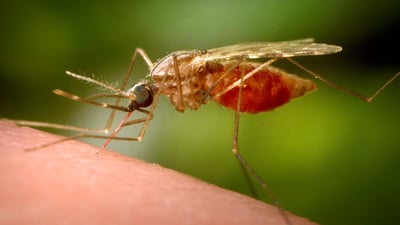Mosquitoes are more than just a nuisance; they can be a significant health hazard. Understanding their lifecycle is crucial for effective control and prevention. Continue reading to learn more about the four distinct stages of a mosquito’s lifecycle.
.png?width=400&height=200&name=300eggs%20(twitter).png)
- Egg Stage
The lifecycle begins when a female mosquito lays her eggs. These eggs are often deposited in or near water sources such as ponds, marshes, or even containers with standing water. Remarkably, mosquito eggs can survive dry conditions for several months, waiting for the right moment to hatch.

- Larvae Stage
Once the eggs hatch, they enter the larvae stage. These larvae, often called “wrigglers,” live in water and come to the surface to breathe. They feed on microorganisms and organic matter in the water. This stage lasts from a few days to several weeks, depending on environmental conditions.

- Pupa Stage
After the larva stage, mosquitoes enter the pupa stage, commonly known as “tumblers.” Pupae do not feed but are active and respond to light changes by tumbling in the water. This stage is a transitional phase where the mosquito prepares to become an adult. It lasts for about two days to a week.

- Adult Stage
The final stage is the adult mosquito. After emerging from the pupal case, the adult mosquito rests on the water’s surface until it is strong enough to fly. Male mosquitoes typically feed on nectar, while females seek blood meals to develop their eggs. This is the stage where mosquitoes become a nuisance and pose a potential health risk.
Prevention Tips
Understanding these stages helps in targeting mosquitoes effectively:
- Eliminate Standing Water: Regularly empty containers that collect water.
- Use Larvicides: These can be applied to water sources to kill larvae.
- Install Screens: Keep mosquitoes out of your home with window and door screens.
- Wear Protective Clothing: Long sleeves and pants can reduce bites.
- Use Repellents: Apply insect repellent when outdoors.
By disrupting the mosquito lifecycle at any stage, you can significantly reduce their population
and the risks they pose.


